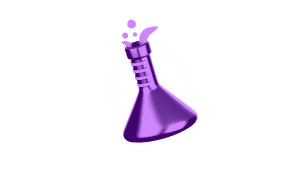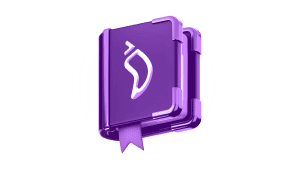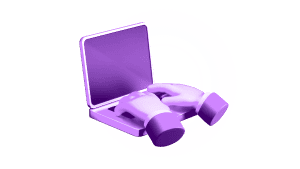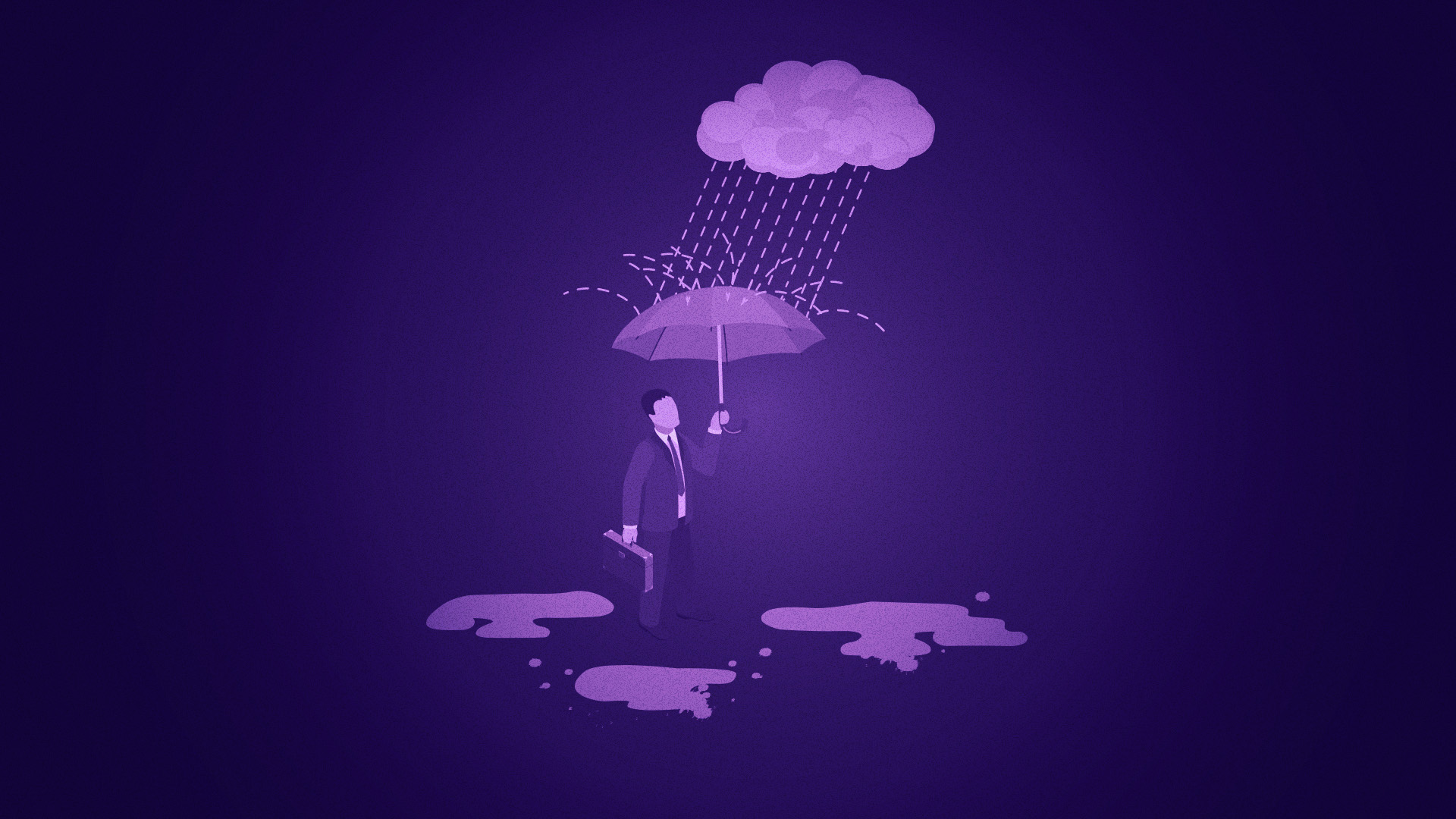Blockchains are great at keeping information secure and verifiable. But they also have a big limitation: they can’t directly access data from the outside world given that they are closed systems. This means that on their own, they don’t know things like market prices, weather updates, or even who won a football match. That’s where blockchain oracles come in.
Oracles act as a bridge between blockchain systems and real-world information. They bring external data — such as stock prices, temperature readings, or sports results — onto the blockchain so smart contracts can use it to make automated decisions. Without oracles, smart contracts would stay isolated in their own digital bubble, unable to react to real-time events.
Oracles make smart contracts truly useful by connecting them to the real world. They’re the missing link that allows decentralized systems to interact with the data and events that shape our everyday lives.
Why Smart Contracts Need Oracles
Smart contracts are designed to run automatically when certain conditions are met, they can only access data that already exists on-chain. That means they can’t directly know the price of Chiliz on an exchange, today’s temperature, or the result of a football match. This isolation keeps blockchains secure, but it also limits what smart contracts can do.
That’s where oracles step in. Oracles act as trusted data feeds that bring verified, real-world information onto the blockchain. For example, a decentralized finance (DeFi) app might use a price oracle to update exchange rates, or an insurance contract could rely on a weather oracle to trigger payouts after a storm.
You can think of it like this: if a smart contract is a calculator, the oracle is the internet connection that feeds it live data. The calculator can process information perfectly, but only once it’s connected to the outside world.
Without oracles, most real-world blockchain applications — from DeFi and insurance to supply chain tracking — simply wouldn’t work. Oracles expand the scope of what smart contracts can achieve.
How Blockchain Oracles Work
As mentioned earlier, blockchain oracles act as messengers between smart contracts and the outside world. They collect information from trusted sources, check its accuracy, and deliver it securely on-chain. Here’s how that process unfolds step by step
1. Smart Contract Requests External Data
A smart contract makes an on-chain call to an oracle contract and specifies the data it needs.That call can include parameters like the data type, acceptable sources, and payment for the service.
The oracle contract logs the request and signals off-chain workers to fetch the data.
The request step safely brings real-world questions into the blockchain in a recorded, auditable way.
2. Oracle Retrieves and Verifies Data From Trusted Sources
An off-chain oracle worker reads the on-chain request and queries external sources such as APIs, exchanges, or sensors.The oracle can fetch the same data from multiple providers, check digital signatures, and run validation rules (e.g., discard outliers). Some systems use reputation, staking, or cryptographic proofs so providers face penalties for bad data.
Proper retrieval and verification reduce the chance of wrong or manipulated inputs reaching smart contracts.
3. The Oracle Now Transmit The Verified Data Back On-chain
After verification, the off-chain worker signs the result and submits it to the oracle contract.The oracle contract records the value, emits an event, and makes the data available for the requesting smart contract to read. All submissions leave an on-chain audit trail: timestamps, hashes, and signatures for later inspection.
Why this matters: On-chain delivery gives smart contracts an immutable record of the data they acted on, supporting transparent and provable behavior.
What is the Distinction Between On-chain Oracle Contracts and Off-chain Data Sources?
On-chain oracle contracts are blockchain code that accepts requests, stores results, and exposes data to other contracts.
Off-chain components do the external work: collecting data, aggregating sources, verifying signatures, and signing results.
The two parts work together: the on-chain contract provides a secure endpoint and audit logs; the off-chain layer provides flexible, real-world data access.
Separating on-chain and off-chain roles keeps costs and consensus load low while preserving strong verifiability and access to live information.
Types of Blockchain Oracles
Blockchain oracles come in different shapes depending on the direction and purpose of the data they handle. Each type solves a specific problem and helps smart contracts interact with the outside world safely.
1. Input Oracles
Input oracles bring external, real-world data onto the blockchain. Examples include asset prices, weather data, or sports match results. Smart contracts use this data to trigger automatic actions, like executing a trade or releasing insurance payouts.
Think of an input oracle as a news feed for your smart contract, it constantly delivers updates from the outside world.
Why this matters: Without input oracles, contracts would remain isolated and unable to respond to real-world events.
2. Output Oracles
Output oracles do the reverse: they send blockchain data to the real world. For instance, a smart contract could trigger a physical device, release funds from a bank account, or notify a service provider once a condition is met.
If input oracles bring news in, output oracles are the messengers sending instructions back out.
Why this matters: Output oracles enable smart contracts to have real-world impact, bridging digital logic with physical action.
3. Cross-Chain Oracles
Cross-chain oracles connect multiple blockchains, allowing smart contracts on one chain to access data from another. This is key for interoperability and decentralized finance applications that span different networks.
Conversely, cross-chain oracles are like translators between two languages, ensuring information flows accurately across chains. They enable multi-chain ecosystems where contracts can interact seamlessly, expanding the reach and functionality of decentralized applications.
4. Consensus Oracles
Consensus oracles gather the same data from multiple sources and compute a single, verified result. By comparing inputs, they prevent manipulation and reduce the risk of inaccurate data reaching smart contracts.
Imagine a jury reviewing multiple eyewitness accounts to decide the truth — consensus oracles do something similar for blockchain data.
Why this matters: Consensus oracles increase trustworthiness, ensuring smart contracts act on accurate, reliable information rather than a single potentially faulty source.
Why Oracles Matter: Real-World Use Cases
Oracles enable smart contracts to engage with external events and information, transforming self-contained code into adaptive automated systems. Without oracles, most decentralized apps would be confined to on-chain data and would be unable to respond to off-chain occurrences.
1. DeFi Applications
Oracles offer dependable price feeds for stablecoins, lending frameworks, and automated market makers, which is pivotal for decentralized finance (DeFi). For example, a lending platform uses price oracles to assess collateral and, subsequently, determine when to execute liquidations.
Oracles operate as a smart contract’s real-time financial ticker, continuously syncing them with prevailing market data. Ensuring contracts access data in real-time, as well as in unfiltered and unbiased formats, is integral to contract safety and prevents losses arising from stale or manipulated data.
2. Sports and Gaming
Oracles have the capacity to relay instantaneous results from sporting contests or eSports competitions directly into smart contracts. This allows the automated execution of fan token reward systems, betting systems, and fantasy leagues in accordance with results.
3. Insurance
Insurance smart contracts can leverage oracles to automate the processing of claims. For instance, a travel insurance contract might automatically trigger a payout when an oracle confirms a flight delay, while a crop insurance policy might activate a payout when a predetermined oracle signal is reached.
Oracles act like a trusted claims adjuster who verifies an event and triggers payment instantly. They turn smart contracts from isolated code into reactive systems that respond to reality, unlocking practical, real-world applications across finance, gaming, and insurance.
Challenges and Future of Oracles in Web3
Oracles are essential for connecting blockchains to the real world, but they come with challenges. Smart contracts rely on the accuracy and reliability of the data fed by oracles.
If data is manipulated or delayed, contracts can execute incorrectly, causing financial losses or operational issues. Trust assumptions also matter — centralized oracles introduce single points of failure, while decentralized networks require careful design to ensure accuracy.
Understanding these risks helps developers and users design safer, more reliable systems that protect both assets and trust.
Innovations Enhancing Oracle Trust
In response to risks, innovation has been forged in the space of tech advancements for risk management, specifically in decentralized oracle networks and cryptographic proof systems. Focusing on the former, decentralized oracles reduce the risk of single-source dependency by aggregating and taking in data from multiple independent systems.
In essence, the cryptographic proof systems functionalities of signed messages and zero-knowledge proofs offer means of auditability on claims of data to be verified and the safety of private data is maintained. Think of it as a panel of experts reviewing multiple reports to agree on the truth before sending it to the contract.
These innovations increase the trust placed in the data as well as the gadgets and systems used in its management, therefore, smart contracts could operate on a set of reliable and verified data, with confidence.
The Future of Oracles
The scope of oracles is expected to increase with the development of new technologies which include IoT, AIs, and targeted APIs for various industries. This also includes the real-time smart contract enabled and automated processing of verified data streams from the real world.
In a sense, oracles may become like highly trained assistants, continuously scanning the world and feeding only verified, relevant updates to contracts. Advanced oracles expand the scope of decentralized applications, making blockchain solutions practical in complex, data-driven environments.
As blockchain expands into every industry, oracles will remain its essential link to the physical world, bridging the gap between digital logic and real-world events while enabling trust, automation, and innovation.











